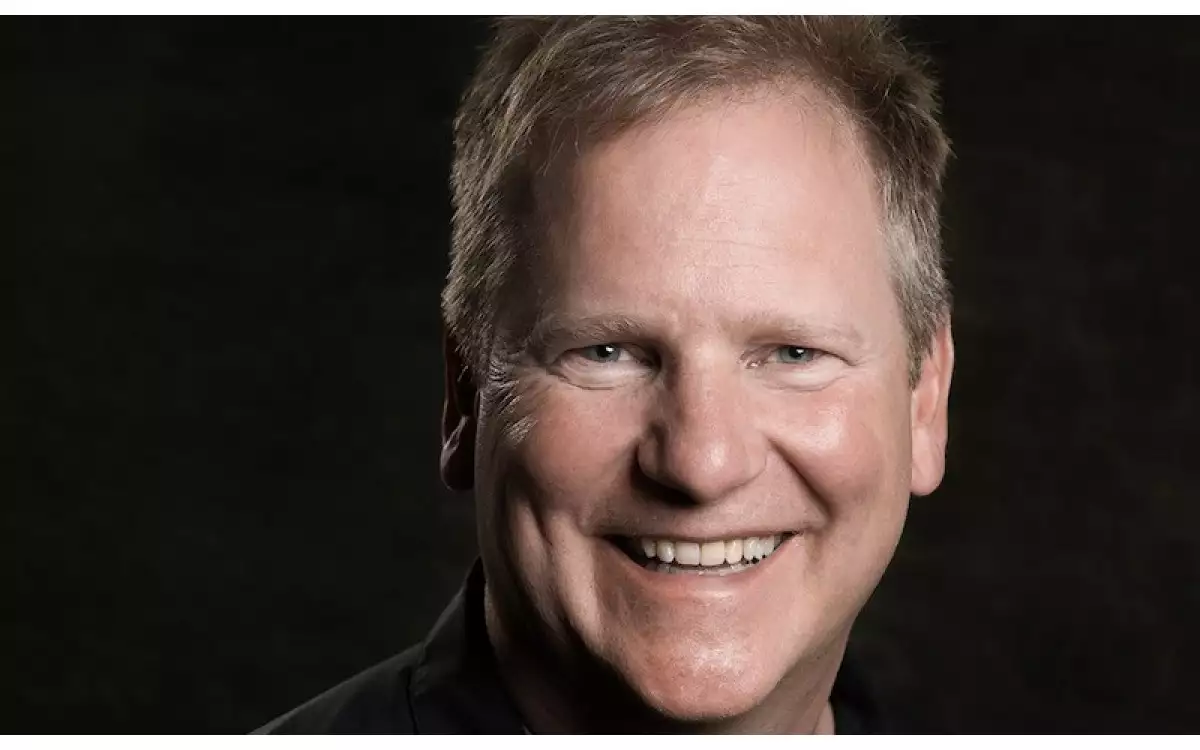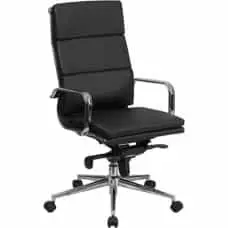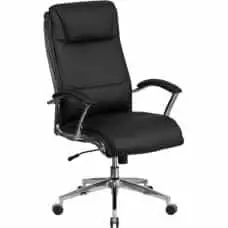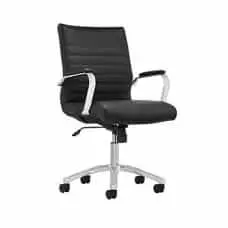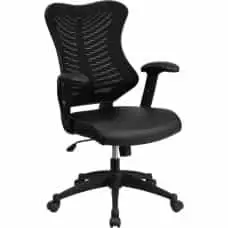We recently interviewed Murray Seward:
My name is Murray Seward. I’m the CEO of Outback Team Building & Training. We help companies all over North America build strong teams, develop soft-skills, and grow great leaders. We do the same for our own company too! I have a passion for the puzzle of business, endlessly testing different combinations of best practices to build the ultimate organization for our customers, employees, and shareholders. I began with Outback back in 1997 as a sales rep, selling local adventures to local companies. In the early 2000's I created our first team building events based on the hit TV shows "Survivor" and "Amazing Race". Today, a little over 20 years later, I'm the CEO and my talented Outback team has operated team building events for almost one million people at companies throughout North America.
Can you give a quick overview of what you do professionally and why you do it?
Murray: I lead our company of 30+ team members, trying to find the perfect balance of customer satisfaction, employee engagement, and profitability. This, of course, is never an easy thing to do as there are so many pieces of the puzzle that need to fit together and stay in balance.
What do you find most meaningful about your work?
Murray: I myself am energized by seeing young employees make the transition from thinking of their work as just a job, to something that can propel them toward a very satisfying and healthy life. Our vision is to help corporate groups across North America build better relationships through memorable experiences. This vision applies to our customers, but also extends internally within our own organization. And I think our ability to do this is one of the most meaningful parts of my work. Being able to help improve working environments for people in their professional lives is a special thing – and an important one.
How important do you believe company culture is to an organization’s success?
Murray: I think culture is a critical component of any organization’s success because it is the foundation of employee engagement at work 24/7/365. But I’ve learned over the years that culture isn’t solely powered by leadership. It starts by determining your company’s core values, then hiring staff who are specifically aligned with those core values.
Companies made up of core value-misaligned team members have a tough time investing enough time and energy in “getting it right and holding it tight” because team members are forever experiencing macro and micro conflicts with each other. Engagement levels, as a result, are low, and with that comes customer satisfaction and profitability results that are often less than stellar.
Without naming the companies, can you give examples of good cultures you have worked in and bad cultures you have worked in and how they have led to positive and negative results respectively?
Murray: One company I worked for struggled constantly because, while some of my colleagues had an “always improving” mindset, many others didn’t. This was a clear-cut example of a business that was core value-misaligned because it lacked that all-important consistent thread that kept everyone on the same page.
So, while some team members wanted to constantly make improvements to systems and processes within the company, the others blocked any progress. The result was a constant tug-of-war, and unfortunately, the leadership team also believed in “keeping the status quo”. In turn, it devalued the improvement efforts of those employees trying to create a better company and hindered our company culture.
One of the biggest benefits of a core value-aligned team, and the positive culture that results from it, is the sheer volume of discretionary effort the company receives from team members. Colleagues want each other to succeed and are energized by the wins that happen for the team each and every day. Getting things done is far easier on a core value-aligned, culture-rich, team.
What is the company that you have worked for or with that you believe has the best culture and why? What can other companies do to emulate their success?
Murray: I’m biased in saying this, but I’ve never worked for a company that had a better culture than Outback Team Building & Training. I’ve been with the company since 1997 and in that time, I’ve had the opportunity to witness and take part in the evolution of our business and our culture.
I think that our culture is so incredible because it’s built on the foundation of our core values:
● We will always put our customers first
● We will always be self-accountable
● We will always take action
● We will always pay great attention to detail
● We will always be open and honest
● We will always be improving
Those values are at the core of everything we do. They inform our every action and we live them every day. And this is all possible because we hire for core value alignment and work hard to keep those values alive and front and center.
But we also work hard to create an environment where people are excited to show up every day. For that to be a reality, it’s important that our entire team buys into our core values and that we proactively foster a positive team dynamic. So, we’re always looking for ways to get our people together – everything from quarterly celebrations to monthly team BBQ's, annual retreats, and Corporate Social Responsibility initiatives like team beach clean-ups. As a result of having buy-in from our staff on our core values, they really take ownership of our culture as well, through all kinds of employee-driven initiatives – movie nights, run clubs, cooking clubs, volunteering initiatives, camping excursions, ski trips. Recently, members of our team even trained for and participated in a Tough Mudder!
Ultimately – and this applies to any business that’s trying to figure out how to create a great culture – it all comes down to having clearly defined core values, hiring for core value alignment, and being proactive in creating opportunities for your team to bond.
What is the company that you have never worked for or with but believe has the best culture?
Murray: I’ve always admired 1-800-Got-Junk. From my perspective, it’s not the most exciting company, by any means, in terms of what it sells. But when it comes to the company’s culture, it seems to be a completely different story. The company is regularly included in “Best Companies to Work For” lists.
What about that company’s culture do you admire from afar?
Murray: Brian Scudamore is phenomenal at combining culture, customer service, and profitability into 1-800-Got-Junk as well as the other companies he operates. From what I’ve read, he does an excellent job of building teams of core value-aligned people and fostering an amazing culture that helps with employee retention and engagement. My understanding is that the company has created a culture centered around positivity, teamwork, and making the best out of every workday.
Describe your office environment and how it relates to your company culture. Give us a feel for your office design, from the office furniture design to the intangibles.
Murray: We know that the environment our staff work in can have a huge impact on their happiness and productivity. So, our two office spaces have been created to meet the needs of the company and our team members. We use clean, simple furniture from IKEA, with office chairs that are comfortable, supportive, and economically priced.
We also understand that balance and flexibility are important factors in any great workspace, so we are dedicated to providing our team with diverse options and spaces. For example, we offer our team members convertible stand-up desks if they desire, and flex office spaces that serve as quieter environments for our staff when they need a place to really focus without distractions.
And we also have work areas and relaxation areas in both offices, like our yoga lounge area and spaces that allow our team to recharge with a change of scenery. We know that our employees need mental breaks in order to be their most productive, so we stress the importance of taking time to unwind, refresh, and re-energize throughout the day in the relaxation areas, and operate with the understanding that when you’re in the work area, it’s time to be productive. We’ve designed the relaxation spaces to encourage intermingling and casual conversation amongst team members in order to further build the culture.
It’s also important to make sure our office space is functional, so we make that a priority as well. For example, with our team executing so many events on a daily basis, we keep a significant inventory of goods and supplies in our warehouse. Because of that, it needs to be well-organized and ultra-functional. So, we recently made a sizable investment into renovating and redecorating our warehouse to ensure it was efficient as possible for our events team.
What do you believe are the key elements to creating and maintaining an uplifting office environment?
Murray: You have to take care of the basics of the environment – heating, cooling, lighting, cleanliness, and overall comfort. Also, providing well-equipped and comfortable areas for team members to relax when on breaks is important in creating an uplifting atmosphere.
In addition to that, we use our office space to proactively drive a great culture and reinforce our core values. For example, we utilize screens throughout the spaces to reinforce key messaging such as upcoming social events, perks and benefits available to our team members, and company results.
We also have an Idea Board in the office where we encourage staff to share their thoughts as well as a “thank-you card system” that our team can use to publicly praise their colleagues for their great work. We also offer a snack bar so that our staff can help themselves to healthy food to stay energized throughout the day.
What does ergonomics mean to you? How has your knowledge of ergonomics impacted your work?
Murray: I’ve always been a believer in taking care of the variables you can control. Ergonomics is one of those variables. I also regularly reinforce that we will invest as much as is needed to get what we need to do the job. We don’t buy the fanciest office equipment if more economical equipment will get the job done at a level we need it to be done at. But we also don’t implement a “one-size-fits-all” mentality when it comes to ergonomics-related items. What one person needs in order to create an effective work environment may be completely different from another colleague. We accommodate this whenever feasible.
How do you buy office furniture? Do you buy furniture online? When do you decide to buy?
Murray: I’m a big fan of IKEA for office furniture, primarily due to cost, simplicity, and the ability to customize it to fit specific spaces. I decided to fully outfit our two offices with desks even before we had the people to sit at them. This created a better environment, in my opinion, and gave the team the feeling that we’re growing and soon would have all the desks used by future team members.
What office chair do you sit in and why? What specific features about your office chair do you appreciate and enjoy? And how would you weigh the relative importance of comfort, posture support, design, cost and other variables?
Murray: I’ve enjoyed my leather office chair from Costco for years. After sitting in many during my work career, it’s the one that feels best to me, and is at a price point that makes sense for the message I want to send to my team: “spend the least amount of money possible on an item to do the job you need it to do”.
What is your best advice on maximizing productivity in the office?
Murray: Take care of all the environmental variables you can control, build a team of core value-aligned people who possess the skills required for their roles, and ensure each and every team member is crystal clear on what they are responsible for delivering. I can’t stress enough how impactful our performance agreement system has been in managing our team’s productivity.
We set clear and concise KPIs for each employee and team within our organization so that they have a direct understanding of what’s expected of them as well as the impact they’re having on the company’s goals. We also put heavy emphasis on collecting – and putting into action – feedback from our staff so that they know they have the ability to make suggestions that could affect the direction of the company.
But beyond that, this feedback process also creates an open and honest environment that makes sure our employees feel comfortable to have critical discussions with their leaders. This, in turn, helps increase employee engagement, which is critical. I recently came across a survey from Gallup that showed how teams who score in the top 20% in engagement realize a 41% reduction in absenteeism, and 59% less turnover.
Engaged employees show up every day with passion, purpose, presence, and energy, so we do everything we can do make it a priority.
What is your best advice on effectively managing others?
Murray: It is critical to document what it is you expect from someone you manage, including actual deliverables AND behaviors. Every employee in our organization works with their leader to develop a half-yearly performance agreement where they outline all the daily tasks and projects they will work on. This document clearly states what “meeting responsibilities” actually looks like for each particular employee and methods of “exceeding responsibilities”. It also outlines what behavioral and skill-related gaps the leader wants them to close.
It is critical that you keep that document alive by referring to it regularly during catchups and monthly check-ins. Each employee’s performance management document is kept in Smartsheet, our project management tool. This allows leaders to check in on the progress of projects and tasks without constantly having to “micromanage” their team members. Micromanagement typically leads to employee dissatisfaction and decreased productivity.
What workplace trends do you see on the horizon? Leave us with three things we should be on the lookout for.
Murray: Technological advances will continue to allow teams that embrace technology to be more effective and efficient in delivering what’s expected of them. Another benefit of technology is the ever-improving ability to work remotely. This will reduce the financial strain of maintaining office spaces and widen the net of potential candidates for open positions. I also believe more companies will begin employing remote virtual assistants to accomplish tasks that are inefficient for local team members to get done.
Beyond the technological trends, I really foresee employee engagement, as a whole, taking off which includes Corporate Social Responsibility initiatives and an increased focus on team building. If there’s one thing we know about the younger generations that are becoming more prominent in today’s workforce, it’s the value they place on companies that give back and that understand the importance of keeping their employees engaged and satisfied. We've seen proof of that as we have continually noticed an increase in team building and training inquiries, as well as sales year-over-year. I think that this really speaks to the fact that organizations are realizing the importance of employee engagement, creating a strong culture, and building relationships between colleagues. I believe this is something we’ll see continue to gain momentum in the future.


